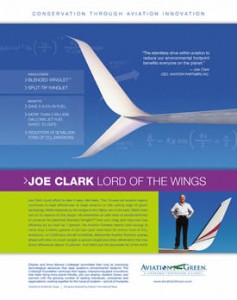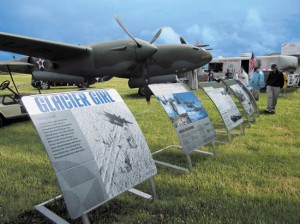Category Archives: GUEST BLOGS
October 3, 2018
Final bill includes Sen. Moran’s provisions to close aviation skills gap, recruit women in Aviation, strengthen the FCT program, protect small and mid-sized airports and increase fairness for general aviation projects
WASHINGTON – U.S. Senator Jerry Moran (R-Kan.) – member of the Senate Committee on Commerce, Science, and Transportation; member of the Aviation Operations, Safety and Security Subcommittee; and co-chair of the Senate Aerospace Caucus – today applauded the passage of the FAA Reauthorization Act of 2018, H.R. 302, by a 93-6 vote in the Senate. This legislation will provide critical reforms and a five-year extension to the Federal Aviation Administration’s (FAA) authority. Last week, the House of Representatives passed this legislation on a vote of 398-23. The bill will now go to President Trump’s desk for signature, making this five-year authorization the longest enacted since 1982. Keep reading >
May 8, 2018
Wichita Public Schools on Monday proposed a new high school aviation curriculum, with the goal of getting students ready to work in the aviation industry immediately after graduation.
The specialized curriculum, called Aviation Pathway, will be the first high school program of its kind in the state if approved by the Kansas State Department of Education.
“This is long overdue,” said Randy Watson, Kansas’ education commissioner. “Finally in the Air Capital city, we have a pathway that helps every student that wants to help lead the world in aviation stay right here at home and do that.”
The district is partnering with Textron Aviation and WSU Tech on the project. The partners said the program is needed due to a retiring workforce and a low unemployment rate. Growth in the manufacturing sector and fewer students choosing manufacturing careers are other factors.
“The engineering that I do on a daily basis is complicated stuff and we need people that know their stuff to be able to put that together and get it out the door,” said Ben Blankley, an engineer at Spirit and a member of Wichita’s Board of Education.
High school graduates can already apply for starting jobs in the aviation industry without taking a specialized curriculum, but Blankley said most students would need at least some technical college training without Aviation Pathway.
Jim Walters, senior vice president of human resources at Textron Aviation, said the new curriculum and the possible credential students could earn would give them an advantage when applying.
“It’s a leg up, frankly, on the rest of the labor force,” Walters said.
Under the proposal, students would take classes at their high school and at WSU Tech’s National Center for Aviation Training. There’s also the possibility of senior year internships or shadowing opportunities. The program would have two different paths: aviation production and aviation maintenance.
A curriculum is expected to be finalized over the summer and will need approval from the Kansas State Board of Education. If approved, the program will launch at North, Northwest, Southeast and West High School in the fall. The curriculum would be fully implemented fall 2019 and available for other districts.
—
This article was written by Stephan Bisaha for KMUW. Bisaha, based at KMUW in Wichita, is an education reporter for the Kansas News Service, a collaboration of KMUW, Kansas Public Radio, KCUR and High Plains Public Radio covering health, education and politics. Follow him on Twitter @SteveBisaha.
January 9, 2018
I will never forget the first time I turned the runway lights all the way up.
I sat in my tall chair up in the ATC tower and cranked those puppies to the max. I felt my eyes grow wide as the lights suddenly transformed from dim dots along a stretch of concrete into truly radiant signals against a black sky. That vibrant runway was beckoning to something far above. “Come on in. We’re ready for you.” I imagined a pilot coming in for landing, spotting my lights from miles away and feeling at ease because he knew exactly where to go. There was something magical about that – me being on the ground and the pilot being all the way up there. At the wee age of 9, I knew there was something special about aviation.
My dad had the coolest job in the whole world.
He was an air traffic controller at what was previously Mid-Continent Airport. My sister and I would fight over whose turn it was to go with him on a mid-shift. I was older, so I won that fight more often than she did. I had very important responsibilities on my shifts. You know, like clicking the clicker all the way up to 9999 while pretending to count how many planes flew in and out that night. Or writing ridiculously important notes on thin, flimsy strips of paper and sending them down the vacuum air tube into what I assumed was a super secret office where my intelligence would be translated and then immediately acted upon. I had my own headset; I listened intently to my dad talk to the pilots (very, very, very quickly) in a language I was convinced was not English.
September 11, 2001 changed all that of course, but my memories had already been set in stone.
Back then, to me, aviation (in its entirety) was ATC. And so aviation was absolutely fantastic. Walking up the narrow stairs to the tower to see my dad made me the most important girl in the world. And every time he took us into the TRACON and let us stand behind the controllers hard at work (after our eyes adjusted, that is), I was in complete awe of how everything worked together like fine-tuned gears to get airplanes up in the air and back down again without allowing a colossal disaster to take place.
As time would have it, though, I grew up and learned just how much more there was to aviation. Surprisingly, I don’t work directly in the industry. But everything about it still has that same magic. Selfishly, I wish my dad hadn’t retired so he could give my kids the inside scoop I was lucky enough to experience. And each time we’re in an airport, I point out all the things that I have so much appreciation for because of those experiences. Like how each tower looks a little different. Or how the ground crew uses signals to talk to the pilot. How every time we get off the plane a maintenance crew checks out all the parts (many of which were probably made right where we live!) to make sure it’s safe for the next group of people to fly. How certain airplanes are made for certain things (passengers vs packages). Or that I’m still not actually sure how our luggage ever successfully gets where it’s supposed to go.
Can I be honest with you?
I don’t have my pilot’s license, but as a grown woman I still stick my head out the window to watch a plane when it flies directly overhead. Proof of that eyes-turned-skyward spirit of aviation, I guess…
I gawk at a plane landing sideways on a windy day.
I make my husband pull the car over on a road trip to watch the T-birds practice in nearby airspace. Funny, though, I always seem to get something in my eye when they float in that flawless formation…
Number 4 on my bucket list is to attend NBAA.
When I was little I got a unique glimpse of the industry from the inside, and grew up in the Air Capital an aviation outsider. Maybe I missed a calling. Or maybe I was always supposed to admire instead of contribute. There’s a little bit of aviation in my blood, though, that much I’m sure of.
I genuinely hope it’s the same for everyone who grows up here, and that we find a way to pass it on, even from the outside.
—
Written by Kristin Wemmer
January 8, 2017
Special thanks to Ashley Bowen Cook for the contribution via Blue Sky Aviation News!
When charting your course, consider where you’ve been. But don’t dwell on those experiences.
Bogging yourself down in what was hinders thoughts of what can be. Position yourself carefully and purposefully with knowledge of the past and a vision of where you want to go.
Think of Janus – ancient Roman god of beginnings, transitions, and endings – depicted with two heads, one viewing the future, and one peering into the past. Learn from his balanced approach. He does not appear confused, but centered by insight.
 It can be the same with your marketing. A successful strategy considers both past experiences and future hopes. And then, launches with confidence. SmartSky Networks began a journey of a lifetime in 2009.
It can be the same with your marketing. A successful strategy considers both past experiences and future hopes. And then, launches with confidence. SmartSky Networks began a journey of a lifetime in 2009.
It brought together a team of industry-leading telecommunications and aviation professionals to launch an inflight connectivity revolution. They built on past successes but stayed open to new ways to overcome entrenched competition. This future-forward focus puts them on track to for a 2017 nationwide network roll out.
You are here
 Take stock of the current situation and ask the relevant questions about how you arrived at this juncture. Who was the intended audience? What was the message? Did you make the hoped for connection? Answer with unflinching honesty and don’t gloss over failures. Apply lessons learned along your long and winding road to correct or to confirm your direction.
Take stock of the current situation and ask the relevant questions about how you arrived at this juncture. Who was the intended audience? What was the message? Did you make the hoped for connection? Answer with unflinching honesty and don’t gloss over failures. Apply lessons learned along your long and winding road to correct or to confirm your direction.
Executive AirShare got its start in 2000, growing out of a highly reputable fixed-base operation in Wichita, Kansas. Now the nation’s third-largest fractional aircraft provider, AirShare doesn’t limit itself to the nation’s heartland. From its operational centers throughout the Central United States and Great Lakes regions, customers fly all over the United States and into the Caribbean, Mexico, Latin America and Canada. It’s grown by developing a do-it-right, get-it-done culture that puts shareowners first.
Get packing
 Prepare for the road ahead. Figure out what kind of creative will be deployed. Consider what worked before. What life can be infused into the strategy. Plot a strategy for leveraging social media and other integrated marketing platforms. Employ a thorough, critical review. Stay on track. Keep the list concise and focused. The way forward will be clear.
Prepare for the road ahead. Figure out what kind of creative will be deployed. Consider what worked before. What life can be infused into the strategy. Plot a strategy for leveraging social media and other integrated marketing platforms. Employ a thorough, critical review. Stay on track. Keep the list concise and focused. The way forward will be clear.
Aviation Partners stands apart as a leader in advanced winglet technology. Founder, CEO and aviation legend Joe Clark continually seeks efficiencies to keep aviation on the cutting edge of green technology. That effort extends to Aviation Partners’ outreach, appropriately targeted to its tech-savvy and highly mobile target audience.
A pocket full of sunshine
 Rainy days come. Draw from previous wins to maintain motivation and stoke energy for you and your team. Recall the greatest risk that reaped a monumental reward. Let these experiences spur you on and keep the project moving forward. They can keep you from stalling out or worse – kicking into reverse.
Rainy days come. Draw from previous wins to maintain motivation and stoke energy for you and your team. Recall the greatest risk that reaped a monumental reward. Let these experiences spur you on and keep the project moving forward. They can keep you from stalling out or worse – kicking into reverse.
Perhaps nothing underscores the value of perseverance more than Glacier Girl, the jewel in Rod Lewis’ impressive Air Legends warbird collectioin. In July 1942, this aircraft (and seven other warbirds), low on fuel, crash-landed on Greenland’s vast ice cap. In 1992, Glacier Girl was taken from its wheels-up position, removed section by painstaking section through shafts carved 25 stories (268 feet) into the ice. The sole rescued survivor of the entire squadron. Since returning to the air in 2002 before a crowd of 20,000, this P-38F Lightning has thrilled thousands more at air shows and events.
Lessons learned
Draw upon the insights of others. Collectively, your teammates know more than you. Collaborate and aha moments will come. Take the time needed to share knowledge so you learn from and don’t repeat mistakes.
Look back at your best work, but don’t live on past glory. Face forward and you may find your best work before you.
October 17, 2016
 First at a Richard Aboulafia-led aerospace panel at Wichita State University’s annual economic outlook conference, then at the Wichita Aero Club October meeting featuring John and Martha King. Both shared insights I’ve been mulling over.
First at a Richard Aboulafia-led aerospace panel at Wichita State University’s annual economic outlook conference, then at the Wichita Aero Club October meeting featuring John and Martha King. Both shared insights I’ve been mulling over.
Let’s start with the aerospace panel and Aboulafia’s reassurance that his forecast would be more positive this time. He said his earlier projection when the global aviation downturn hit in 2008 “falls under the category when bad things happen to good people.” Then just to remind us how bad it was, he showed an aircraft delivery chart full of downward lines and said, “That red line at the bottom, that’s what happened to Wichita.” The difference this time around, he said, is that the strong correlation between oil prices and large aircraft has less effect on Wichita’s small and midsize markets. He practically had us dancing in the aisles when he added that the serious body blow to Wichita’s small and midsize markets is a thing of the past. The worries today, he said are more for big aircraft, such as those manufactured in Savannah.
Aboulafia’s chart for aircraft production from 2006 to 2025 shows growth. That steady, light-blue ribbon represents business aviation. Not soaring, but certainly holding its own. Steady as she goes.
Fellow panelists Jason Cox and Dave Franson acquitted themselves well, as always. Franson recounted why Wichita will remain the Air Capital – not the least of which is that we’ve manufactured more planes than anywhere on the planet – more than 300,000 since the 1920s. Cox, a third-generation aviation supplier, spoke about the fourth revolution or the internet of things having arrived “like a teenager on Instagram.” And, it’s obvious Cox welcomes the innovation these new technologies and possibilities bring.
At the Wichita Aero Club luncheon following this panel, John and Martha King provided a global picture of flight training. John started things off with a bold statement, “Flight training determines the future of aviation.” Yes, they’re apt to be biased since flight training is their business, but they also bring a perspective molded by decades of experience. “Flying made the world accessible to us and changed our view of the world forever,” said John.
After coming from a panel more focused on the manufacture of aircraft, it was good to be reminded of the importance of the human element – specifically pilots. Having enough of them to fly our fleets and training that keeps them aloft.
“Experience is a lousy teacher,” John said. “It gives the test first then teaches the lesson after . . . We need to develop a new risk-management vocabulary and system.”
As always, technology keeps things interesting. “Here come the drones, and they’re a big deal,” said Martha. In less than a year, more than 550,000 unmanned aircraft were registered. Manned aircraft number less than half that. And the drones keep getting better, with huge advances in drone see-and-avoid technology. “Boy is it coming fast,” said Martha. Both Kings encouraged the aviation community to welcome remote pilots into the fold, but they acknowledged that privacy concerns make us look at operators skeptically. “We have a fascination and a fear of anything that rises up into the third dimension,” said John.
January 25, 2012
Years ago, while employed at Cessna, I was “checked out” to fly single engine airplanes by one of the most capable and precise pilots I’ve ever seen.
His piloting skills were as good as his jokes were corny and bad, but I learned from him every time we flew together. Perhaps his only mistake as a flyer was to sign me off to terrorize the skies on my own. But, he managed to survive with his reputation in tact and has gone on to a have a noteworthy and productive teaching career.
Dr. Jerry Robinson knows a lot about flying. When I told him I was looking for some guest “bloggers” for the Aero Club website, he willingly accepted my invitation. Here’s the first of what I hope will be numerous offerings from an insightful and capable flight instructor who can also write a little bit, too!
FOREST…OR TREES?
We all know that sometimes we can’t see the forest for the trees. But I fear that we’re approaching a point in flight training where we can’t see the trees for the forest.
I’ve been a flight instructor since 1963, and a Designated Pilot Examiner for a considerable portion of that time. It’s easy…and natural, I suppose… to look fondly on the “good old days” and argue that aviation has gone to hell in a hand basket, and that we just don’t do it like we did back in the day. Keep reading >

